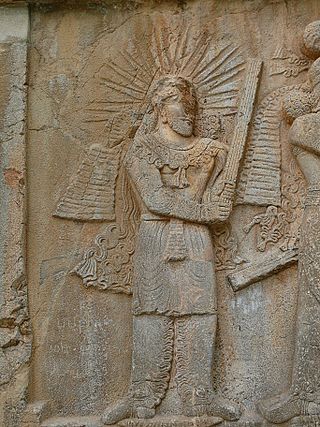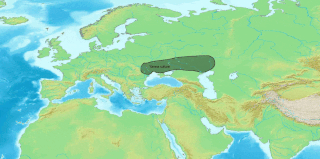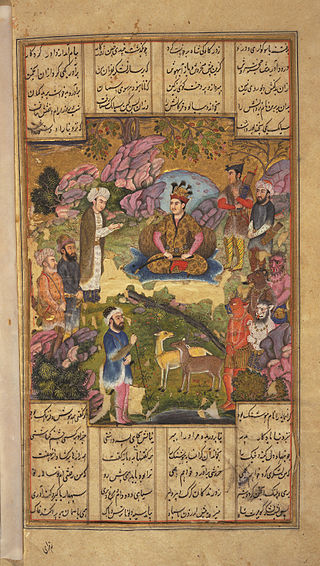
Zoroastrianism, also known as Mazdayasna and Behdin, is an Iranian religion. One of the world's oldest organized faiths, it is based on the teachings of the Avesta and the Iranian prophet Zoroaster. It has a dualistic cosmology of good and evil within the framework of a monotheistic-style ontology; meaning that the religion's eschatology predicts the ultimate triumph of good over evil. Zoroastrians exalt an uncreated and benevolent deity of wisdom, commonly referred to as "Ahura Mazda", as the universe's supreme being; opposed to Ahura Mazda is "Angra Mainyu", who is personified as a destructive spirit and the adversary of all things good. Historically, the unique features of Zoroastrianism, such as monotheism, messianism, belief in free will and judgement after death, conception of heaven, hell, angels, and demons, among other concepts, may have influenced other religious and philosophical systems, including the Abrahamic religions and Gnosticism, Northern Buddhism, and Greek philosophy.

The Avesta is the primary collection of religious texts of Zoroastrianism, composed in the Avestan language.

Adherents of Zoroastrianism use three distinct versions of traditional calendars for liturgical purposes, all derived from medieval Iranian calendars and ultimately based on the Babylonian calendar as used in the Achaemenid empire. Qadimi ("ancient") is a traditional reckoning introduced in 1006. Shahanshahi ("imperial") is a calendar reconstructed from the 10th century text Denkard.

Mithra, commonly known as Mehr or Mithras among Romans, is an ancient Iranian deity of covenants, light, oath, justice, the sun, contracts, and friendship. In addition to being the divinity of contracts, Mithra is also a judicial figure, an all-seeing protector of Truth, and the guardian of cattle, the harvest, and the Waters.

Iranian mythology, or Persian mythology in western term, is the body of the myths originally told by ancient Persians and other Iranian peoples and a genre of ancient Persian folklore. These stories concern the origin and nature of the world, the lives and activities of deities, heroes, and mythological creatures, and the origins and significance of the ancient Persians' own cult and ritual practices. Modern scholars study the myths to shed light on the religious and political institutions of not only present-day Iran but of the [Persosphere], which includes [region]s of West Asia, Central Asia, South Asia and Transcaucasia where the culture of Iran has had significant influence. Historically, these were regions long ruled by dynasties of various Iranian empires, that incorporated considerable aspects of Persian culture through extensive contact with them, or where sufficient Iranian peoples settled to still maintain communities who patronize their respective cultures. It roughly corresponds to the Iranian Plateau and its bordering plains.

Yasna is the Avestan name of Zoroastrianism's principal act of worship. It is also the name of the primary liturgical collection of Avesta texts, recited during that yasna ceremony.

A daeva is a Zoroastrian supernatural entity with disagreeable characteristics. In the Gathas, the oldest texts of the Zoroastrian canon, the daevas are "gods that are rejected". This meaning is – subject to interpretation – perhaps also evident in the Old Persian "daiva inscription" of the 5th century BCE. In the Younger Avesta, the daevas are divinities that promote chaos and disorder. In later tradition and folklore, the dēws are personifications of every imaginable evil. Over time, the Daeva myth as Div became integrated to Islam.

Yazata is the Avestan word for a Zoroastrian concept with a wide range of meanings but generally signifying a divinity. The term literally means "worthy of worship or veneration", and is thus, in this more general sense, also applied to certain healing plants, primordial creatures, the fravashis of the dead, and to certain prayers that are themselves considered holy. The yazatas collectively are "the good powers under Ahura Mazda", who is "the greatest of the yazatas".

The Book of Arda Viraf is a Zoroastrian text written in Middle Persian. It contains about 8,800 words. It describes the dream-journey of a devout Zoroastrian through the next world. The text assumed its definitive form in the 9th-10th centuries after a series of redactions and it is probable that the story was an original product of 9th-10th century Pars.

Zahhāk or Zahāk, also known as Zahhak the Snake Shoulder, is an evil figure in Persian mythology, evident in ancient Persian folklore as Azhi Dahāka, the name by which he also appears in the texts of the Avesta. In Middle Persian he is called Dahāg or Bēvar Asp the latter meaning "he who has 10,000 horses". In Zoroastrianism, Zahhak is considered the son of Ahriman, the foe of Ahura Mazda. In the Shāhnāmah of Ferdowsi, Zahhāk is the son of a ruler named Merdās.

Keyumars or Kiomars was the name of the first king (shah) of the Pishdadian dynasty of Iran according to the Shahnameh.

Ahuna Vairya is the first of Zoroastrianism's four Gathic Avestan formulas. The text, which appears in Yasna 27.13, is also known after its opening words yatha ahu vairyo. In Zoroastrian tradition, the formula is also known as the ahun(a)war.

The Vendidad /ˈvendi'dæd/ or Videvdat or Videvdad is a collection of texts within the greater compendium of the Avesta. However, unlike the other texts of the Avesta, the Vendidad is an ecclesiastical code, not a liturgical manual.

Bundahishn is the name traditionally given to an encyclopedic collection of Zoroastrian cosmogony and cosmology written in Book Pahlavi. The original name of the work is not known.

The Chinvat Bridge or the Bridge of the Requiter in Zoroastrianism is the sifting bridge, which separates the world of the living from the world of the dead. All souls must cross the bridge upon death. The bridge is guarded by two four-eyed dogs, described in the Videvdat (Vendidad) 13,9 as 'spâna pəšu.pâna'.

Visperad or Visprad is either a particular Zoroastrian religious ceremony or the name given to a passage collection within the greater Avesta compendium of texts.

Gavaevodata is the Avestan language name of the primordial bovine of Zoroastrian cosmogony and cosmology, one of Ahura Mazda's six primordial material creations and the mythological progenitor of all beneficent animal life.
The Dana-i Menog-i khrat, or 'opinions of the spirit of wisdom', a Middle Persian book which was written about 8th century. It comprises the replies of that spirit to sixty-two inquiries, or groups of inquiries, made by a certain wise man regarding various subjects connected with the Zoroastrian religion. This treatise contains about 11,000 words, and was long known, like the Shikand-gumanic Vichar (53), only through its Pazand version, prepared by a Persian zoroastrian writer, Neryosang in middle age.

The Yenghe hatam is one of the four major mantras, and one of the most important prayers in Zoroastrianism. It is interpreted as a call to pray specifically to the Amesha Spentas, or generally to all Zoroastrian divinities.

Xwedodah is a spiritually-influenced style of consanguine marriage assumed to have been historically practiced in Zoroastrianism before the Muslim conquest of Persia. Such marriages are recorded as having been inspired by Zoroastrian cosmogony and considered pious. It was a high act of worship in Zoroastrianism, and there were punishments for not performing it. This form of direct familial incest marriage allowed Zoroastrians to marry their sisters, daughters, granddaughters, and their own mothers to take as wives. Xwedodah was widely practiced by royalty and nobility, and possibly clergy, but it is not known if it was commonly practiced by families in other classes. In modern Zoroastrianism it is near non-existent, having been noted to have disappeared as an extant practice by the 11th century AD.







